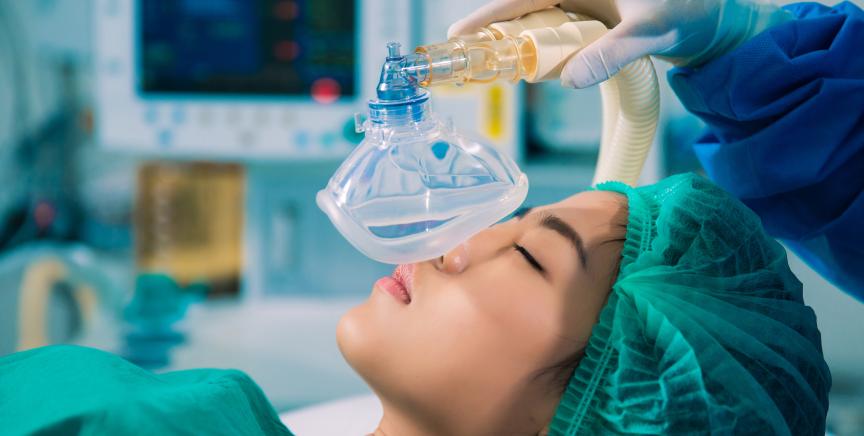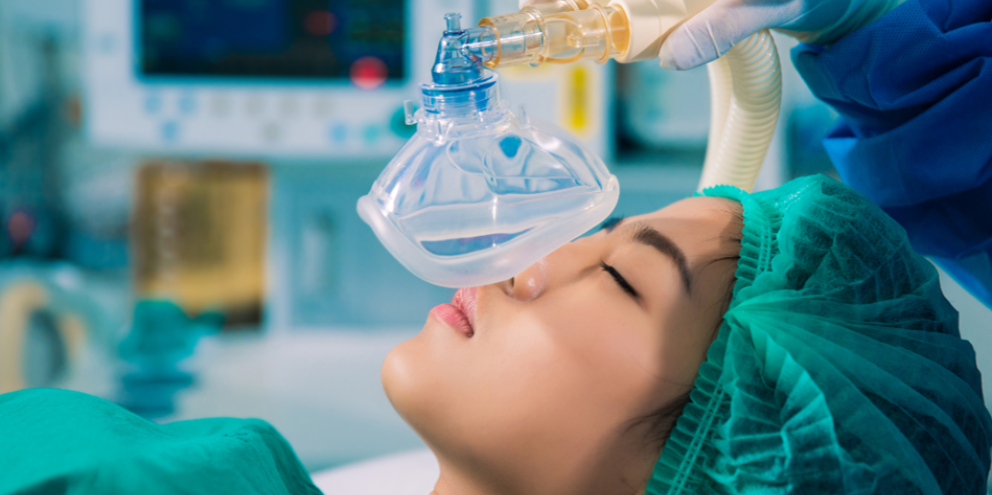
Awareness during surgery has implications for patient safety, points to the need for standards for intraoperative depth-of-anesthesia monitoring, and has an impact on our understanding of human consciousness. Studies have suggested that awareness and recall in patients receiving sedation or anesthesia may be associated with long-term psychological consequences.3 In general, it is accepted that the experience of awareness with explicit recall of surgical events can be traumatic for patients, potentially leading to post-traumatic stress disorder (PTSD).4
Known Controversies
It is understood that the number of patients who exhibit awareness during procedures without explicit recall afterward is significantly higher than those who do experience post-procedural recall. This situation introduces an important philosophical question about the ethics of permitting a patient to experience a level of surgical awareness despite that there will be no memory remaining of the event later. A number of controversial or “taboo” issues arise from this consideration.
It has been suggested that implicit recall may result in PTSD, even in the absence of explicit recall; however, there exists little supporting evidence for this at this time.5 In patients with PTSD related to surgical events, the most likely contributing factors include pain, prolonged intubation, unpleasant intensive care unit experiences, physical debility, explicit and traumatic memories, and distressing diagnoses. Sub-syndromal PTSD and psychological morbidity (such as anxiety or mood disorders) also must be taken into account, even if not linked to a specific experience.
Another concern of note is the possibility that unresponsiveness may not reliably indicate unconsciousness. A positive result achieved with the isolated forearm technique (IFT) test, which assesses an individual’s responsiveness following intubation, suggests that patients can possess some level of consciousness at a time when anesthesiologists believe they are unconscious. An international, six-center study of 260 patients reported that the incidence of positive IFT results is 4.6%. However, only a small percentage of patients who respond to the IFT test will ultimately have any recall. This demonstrates that postoperative reporting of awareness by patients underestimates the occurrence of wakefulness or near-awareness during anesthesia and raises the question as to whether awareness that is not remembered is the same as no awareness at all.6–8
Patient Experience
The most frequently reported experiences of intraoperative awareness include the perception of voices and other noise.9 Other negative experiences, such as feeling agonizing pain and pressure as well as distressing feelings of helplessness and powerlessness related to neuromuscular paralysis, have also been cited. The consequences of intraoperative awareness include memories of events during general anesthesia that can lead to nightmares, panic, a fear of dying, and the development of PTSD. Early recognition and counseling may reduce long-term psychological effects.9
Avoiding Awareness
Some researchers have suggested that intraoperative awareness is a result of insufficient dosing of anesthesia.10 It has also been found that patients who exhibit genetic insensitivity or resistance to anesthetic-induced amnesia may be more prone to being insufficiently dosed and therefore experiencing associated intraoperative awareness.10
Depth-of-anesthesia monitoring cannot identify patient consciousness. However, it does provide insight into the effects of anesthesia on the brain and generally measures either spontaneous cortical electrical activity via electroencephalography (EEG) or stimulus-evoked electrical activity.
The GE CARESCAPE Monitor with the GE Entropy™ Module is indicated for adult and pediatric patients older than 2 years within a hospital for monitoring the state of the brain by data acquisition of electroencephalograph (EEG) and frontal electromyograph (FEMG) signals. The spectral entropies, Response Entropy (RE) and State Entropy (SE), are processed EEG and FEMG variables. In adult patients, Response Entropy (RE) and State Entropy (SE) may be used as an aid in monitoring the effects of certain anesthetic agents, which may help the user to titrate anesthetic drugs according to the individual needs of adult patients.
The GE CARESCAPE Monitor with the GE Entropy™ Module displays both RE and SE components which may help the clinician determine the state of the brain during general anesthesia.11 Furthermore, studies have indicated that in adults, the use of Entropy parameters may be associated with a reduction of anesthetic use and faster emergence from anesthesia.13,15,16 The Entropy measurement is to be used as an adjunct to other physiological parameters. One study showed significantly reduced requirements for propofol in elderly patients utilizing depth-of-anesthesia entropy monitoring.12 The consumption of smaller amounts of anesthetic agents has also been associated with a shorter recovery time post-operation. 13 Finally, as an additional benefit, one study showed that the consumables utilized by the CARESCAPE Monitor with the GE Entropy™ Module are less expensive than the sensors required for the Depth of Anesthesia monitoring performed by other devices.14
References
- Weiser TG, Haynes AB, Molina G, et al. Estimate of the global volume of surgery in 2012: an assessment supporting improved health outcomes. Lancet. 2015;385(Suppl 2):S11. DOI: 10.1016/S0140-6736(15)60806-6. Accessed May 20, 2019.
- Sebel PS, Bowdle TA, Ghoneim MM, et al. The incidence of awareness during anesthesia: a multicenter United States study. Anesth Analg. 2004;99(3):833–839. DOI: 10.1213/01.ANE.0000130261.90896.6C. Accessed May 20, 2019.
- Cook TM, Andrade J, Bogod DG, et al. 5th National Audit Project (NAP5) on accidental awareness during general anaesthesia: patient experiences, human factors, sedation, consent, and medicolegal issues. Br J Anaesth. 2014;113(4):560–574. DOI: 10.1093/bja/aeu314. Accessed May 20, 2019.
- Mashour GA, Avidan MS. Intraoperative awareness: controversies and non-controversies. Br J Anaesth. 2015;115(Suppl 1):i20–i26. DOI: 10.1093/bja/aev034. Accessed May 20, 2019.
- Wang M, Messina AG, Russell IF. The topography of awareness: a classification of intra-operative cognitive states. Anaesthesia. 2012;67:1197–1201. DOI: 10.1111/anae.12041. Accessed May 20, 2019.
- Pryor KO, Veselis RA. Isolated forearm test: replicated, relevant, and unexplained. Anesthesiology. 2017;126(2):202–204. DOI: 10.1097/ALN.0000000000001480. Accessed May 20, 2019.
- Sanders RD, Gaskell A, Raz A, et al. Incidence of connected consciousness after tracheal intubation: a prospective, international, multicenter cohort study of the isolated forearm technique. Anesthesiology. 2017;126(2):214–222. DOI: 10.1097/ALN.0000000000001479. Accessed May 20, 2019.
- Flaishon R, Windsor A, Sigl J, Sebel PS. Recovery of consciousness after thiopental or propofol. Bispectral index and the isolated forearm technique. Anesthesiology. 1997;86(3):613–619. Accessed May 20, 2019.
- Bischoff P, Rundshagen I. Awareness under general anesthesia. Dtsch Arztebl Int. 2011;108(1–2):1–7. DOI: 10.3238/arztebl.2011.0001. Accessed May 20, 2019.
- Nickalls RW, Mahajan RP. Awareness and anaesthesia: think dose, think data. Br J Anaesth. 2010;104(1):1–2. DOI: 10.1093/bja/aep360. Accessed May 20, 2019.
- Aho AJ, Lyytikäinen LP, Yli-Hankala A, Kamata K, Jäntti V. Explaining entropy responses after a noxious stimulus, with or without neuromuscular blocking agents, by means of the raw electroencephalographic and electromyographic characteristics. Br J Anaesth. 2011;106(1):69–76. DOI: 10.1093/bja/aeq300. Accessed May 20, 2019.
- Riad W, Schreiber M, Saeed AB. Monitoring with EEG entropy decreases propofol requirement and maintains cardiovascular stability during induction of anaesthesia in elderly patients. Eur J Anaesthesiol. 2007;24(08):684–688. DOI: 10.1017/S026502150700018X. Accessed June 1, 2019.
- Vakkuri A, Yli-Hankala A, Sandin R, et al. Spectral entropy monitoring is associated with reduced propofol use and faster emergence in propofol-nitrous oxide-alfentanil anesthesia. Anesthesiology. 2005;103(2):274–279. Accessed June 1, 2019.
- Shepherd J, Jones J, Frampton G, Bryant J, Baxter L, Cooper K. Clinical effectiveness and cost-effectiveness of depth of anaesthesia monitoring (E-Entropy, Bispectral Index and Narcotrend): a systematic review and economic evaluation. Health Technol Assess. 2013;17(34):1–264. DOI: 10.3310/hta17340. Accessed May 20, 2019.
- Aimé, I., et al. Does monitoring bispectral index or spectral entropy reduce sevoflurane use? Anesthesia and Analgesia,103(6), 1469–1477 (2006).
- El Hor, T., et al. Impact of entropy monitoring on volatile anesthetic uptake. Anesthesiology, 118(4), 868–873 (2013).








